Annika Olsson
Modelling 1987 – 1992
Long before Elaine George was the first Aboriginal model to grace the cover of Vogue in 1993, young Annika Olsson had been carving out a modelling career in Adelaide, since 1987. Olsson, whose father is Swedish and mother Yunkunyutjatjarra, was only 18 and had been spotted by the woman who now heads Finesse Models, Bridget Mitchell. She is likely to be Australia’s first Aboriginal model.
1. When & how did you get started in modelling?
I began modelling when I was 18yrs old after I was approached by MJs modelling academy. I was studying beauty therapy at Josephine’s in Gilbert place which shared a building with MJs and Bridget asked if i was interested in doing a modelling course. She stopped me on the stairs and convinced me that I had what it took.
I enrolled and won the catwalk excellence award for my class of students at a graduation ceremony held at the new Hilton International in 1987. I can’t remember my first job but one of the first was for Balarinji Design.
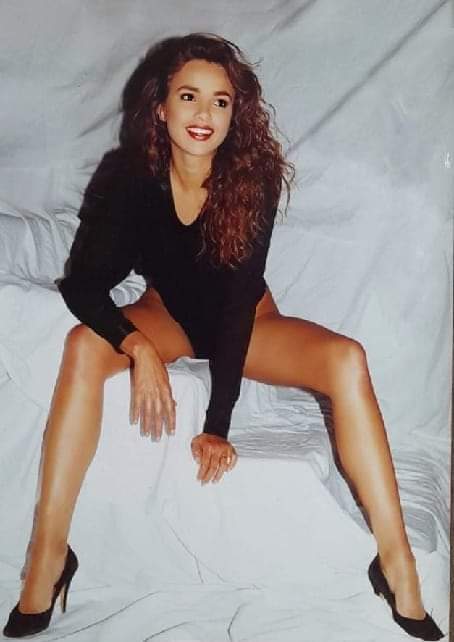
2. Why did you decide on modelling?
I guess the opportunity arose and I already had a background in dance. I’d done classical ballet from 5yrs of age and had previously done some acting and an introductory level modelling course with Pam Arnold’s. I enjoy performance of all types and I saw modelling as another skill I could always use.
3. Where did you feature most? Runway, advertising, fashion features, photographic?
I was definitely a runway model. It’s what I most enjoyed and was always selected for at nearly every viewing/selection process. I didn’t say no to other work but was usually always busy with runway model work.
Adelaide was a very exciting place in fashion at the time and i was lucky enough to represent the best we had to offer including George Gross and Harry Who, Carla Zampatti and the Lady Mayoress parades. I was selected for David Jones parades and did most of the viewings for buyers that were held by various wholesalers and labels such as Table 8 and Cue.
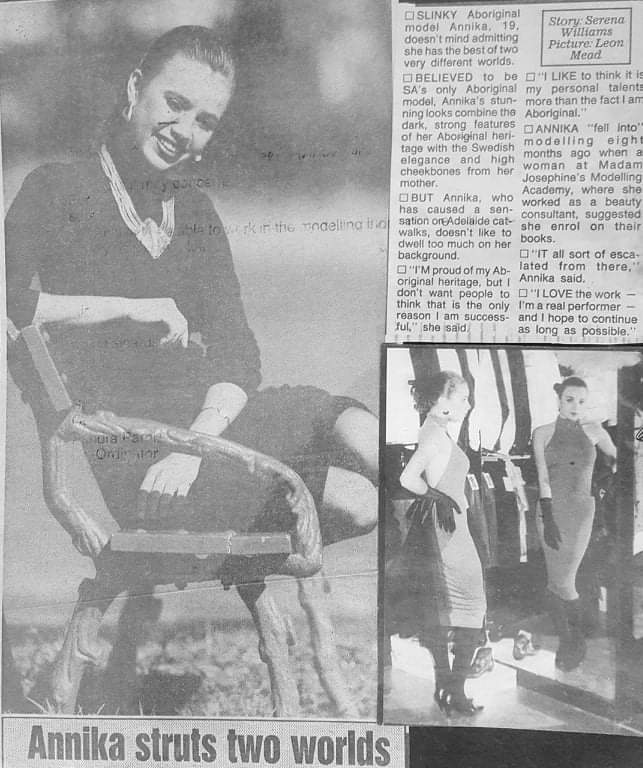
4. Overall, how would you reflect on your career?
I enjoyed it very much! I only had a few negative experiences and they are not worth dwelling on in the big scheme of things. It was fun and exciting and good experience for the future.
I was a popular model for my presentation on the runway and my look that was often referred to as classic European. Adelaide was booming but there was no real national and international pathways at the time. This was to follow later due to the partnerships developed and tenacity of the individual local agencies.
I am proud of the time I spent working professionally as a model. I was simply “a model”. Not “an Aboriginal model”, and not even “the first Aboriginal model”. I guess that is my proudest and most valued accomplishment – that I achieved at the highest level alongside all other models of various nationalities and cultural heritage. I was always proud of my Aboriginality. However I was more proud of being good at what I did and competitive on a level playing field. I chose a path that was right for me and my family and have no regrets about my decisions. And my skills have served me and others well over the course of my working life.
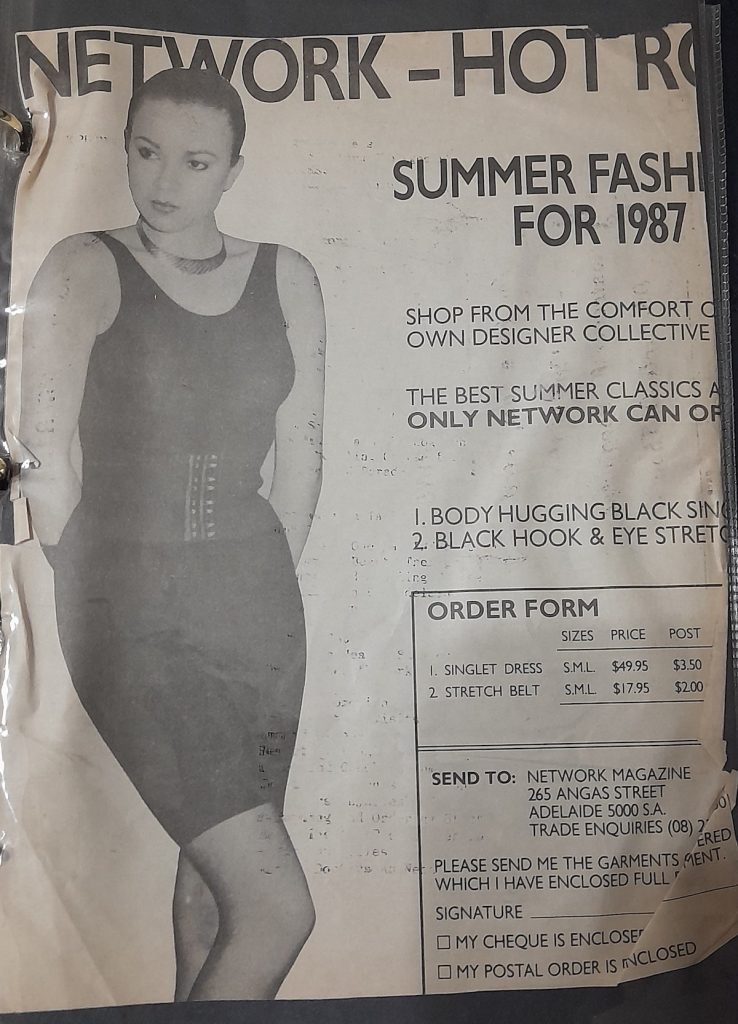
5. How important was it to be known as an Aboriginal model or the first Aboriginal model?
It wasn’t really. It was more important to be known as a good model who excelled on the runway. When it became widely known and the news story broke it didn’t do me any harm either. I was proud of my heritage and proud of the news stories that I received.
Somewhere around 1987 or 1988 the local news became interested in me after it became known that I was of Aboriginal descent. I had been in a news piece for Balarinji Designs, the company owned by John Moriarty that had been featured on Qantas planes. I was featured wearing some of his designer outfits and accessories.
So a feature story on me was done by the Adelaide news which was syndicated to Herald Sun and UK truth newspapers.
Around this time I was selected amongst the first group of Fosters Grid Girls for the Australian Grand Prix in Adelaide. Those were exciting and interesting times in Adelaide.
In 1990 I had the opportunity arise to work in Port Augusta where my husband was a youth worker. I decided to teach basic modelling, deportment and grooming courses for the young people in the town believing that opportunities in regional towns were few and far between and that confidence and pride in oneself can set them on a path to success whatever their chosen field may be. We had a very successful run with over 60 young people before funding ran out and my husband relocated to Adelaide for work.
I briefly returned to the catwalk this time for Jan Beaslys RAVE Agency, participating in the spring parades of 1992 before deciding to pursue other opportunities that had really taken interest and precedent over the fashion industry.
I became a community support worker and community information officer for the SA government, more specifically working in antipoverty programs and women’s services. However my experience in the fashion industry was always extremely valuable. I used the skills working with Aboriginal young offenders in the Magill Youth Training Centre, thanks to Sue Wilson and Mike Smith and with the Metropolitan Aboriginal Youth Service.
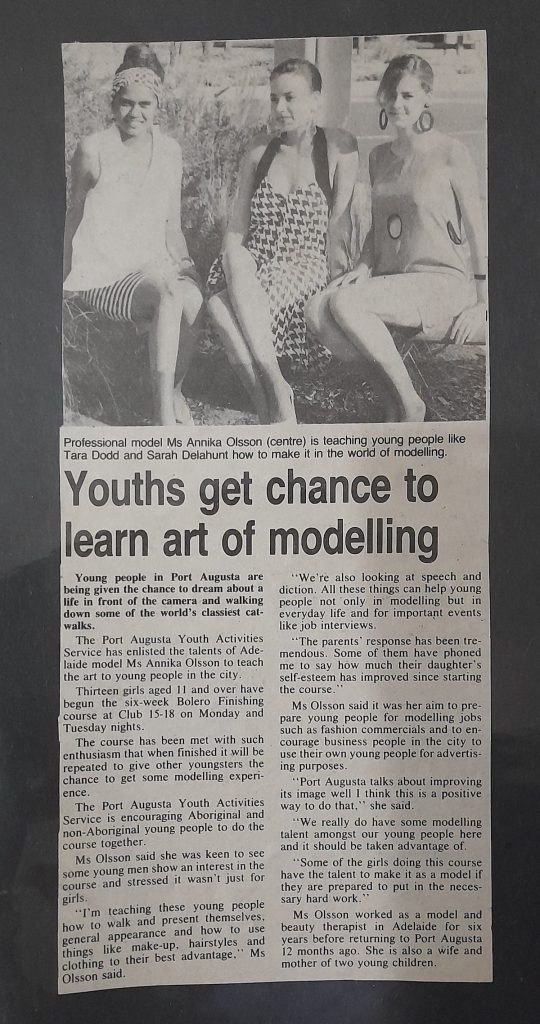
6. If you had your time again, what would you change.
I would probably explore options interstate and internationally. These options were very limited in the 80s and of course the ability to self promote wasn’t available. It was early days for Adelaide girls with no connections.
7. What were the highlights of your modelling career?
Working with the best Adelaide had to offer. Great designers and labels such as George Gross and Harry Who, Carla Zampatti, Gladys Sym Choon.
The David Jones parades were also a highlight, along with the Lady Mayoress parades and Spring Fashion Week. There were also big parades at the Hilton International and Festival Centre. And I have to mention the first Foster’s Formula 1 Grand Prix.
8. Favourite projects?
My favourite project was teaching other young people my skills in regional small towns and young people at risk. I even worked with young offenders in youth detention centres and the self esteem and confidence I saw develop in them was worth every effort.
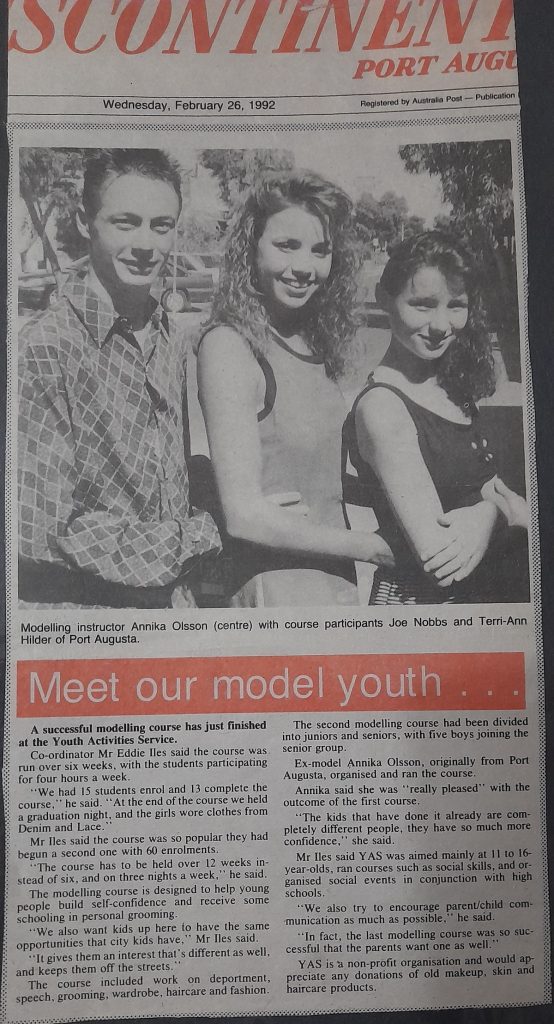
9. What are the changes you see from being possibly Australia’s first Aboriginal model and now, for Aboriginal & Torres Strait Islander models?
Lots more opportunity and exposure exists now. Especially photographic modelling work and international pathways. Although I don’t think the elegance and style on the runway is as good as it used to be. Bridget and the other agents/teachers certainly knew what looked good on a runway in the 1980s.
10. Your impressions of the First Nations Fashion & Design runway at Australian Fashion Week 2021, if you saw?
I didn’t see it to be honest. I have only become aware of it now. What do I think now? I think its wonderful and exciting and inspiring.
__________________
Since publishing, we’ve been contacted by Patty Huntington who advises that the first Indigenous model was Lois Peeler in the 60’s, then Elizabeth Geia, Sandra King, and Cecily Atkinson.
To see more of Australia’s top indigenous models go to Aboriginal Models.
